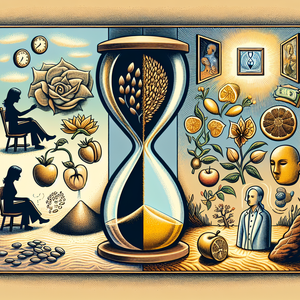The Art of Greeting: Cultural Variations in "Hi"

In many Spanish-speaking countries, the word "hola" is not just a casual greeting; it embodies warmth and friendliness. In places like Mexico or Spain, it is common to accompany "hola" with a hug or a kiss on the cheek, showcasing the importance of physical touch in establishing connections. For example, when friends or family meet, the greeting ritual can involve multiple cheek kisses, depending on the region. This reflects the cultural value placed on personal relationships and community, highlighting how greetings can strengthen social bonds.
The Formality of "Ni Hao" in China
Conversely, in China, the greeting "ni hao" (你好) carries a sense of formality and respect. The Chinese culture emphasizes hierarchy and respect for elders, often reflected in the way greetings are exchanged. It is customary for individuals to inquire about one another's well-being or family, showcasing an interest that goes beyond the superficial. For instance, asking "Have you eaten?" (吃了吗?) is a common way to express care. This cultural practice highlights the importance of familial and social ties in Chinese society, demonstrating how greetings can serve as a bridge to deeper connections.
The Unique Greeting of "Namaste" in India
In India, "namaste" is a greeting that transcends a simple "hi." It is often accompanied by a gesture of pressing the palms together in front of the chest, signifying respect and acknowledgment of the divine in each person. This form of greeting reflects the spiritual and philosophical underpinnings of Indian culture, emphasizing respect for one another and the interconnectedness of all beings. The act of bowing slightly while saying "namaste" further enhances the sense of humility and reverence, making it a deeply meaningful exchange.
The Casual "G’day" in Australia
On the other end of the spectrum, Australians often greet each other with a laid-back "G’day," which embodies the relaxed and informal nature of Australian society. This greeting suggests openness and friendliness, inviting conversations and fostering a sense of community. It reflects the cultural value of egalitarianism and the belief that no one is superior to another. For instance, it is common for strangers to use "G’day" in public spaces, promoting a friendly atmosphere that encourages interaction among individuals from diverse backgrounds.
The Subtlety of "Salam" in the Middle East
The Arabic greeting "salam" (سلام) translates to peace and is a way of wishing well to others. This greeting is often used in various forms across the Middle East and emphasizes goodwill and hospitality. The cultural significance of "salam" is profound, as it reflects the value placed on peace and social harmony within these societies. In many cases, greetings are elaborated upon with phrases such as "salam alaykum" (peace be upon you), reinforcing the cultural commitment to kindness and mutual respect.
The Importance of Context
Understanding the context in which greetings are exchanged is crucial. For instance, while a firm handshake may be seen as a sign of confidence in Western cultures, it could be interpreted as aggressive in other cultures. The nuances of greetings can also be influenced by factors such as age, gender, and social status. In Japan, for example, bowing is a common greeting that conveys respect, and the depth of the bow can indicate the level of respect being shown. Being aware of these variations can enhance cross-cultural communication and foster stronger relationships, making it essential for individuals in our globalized world to navigate these intricacies with sensitivity.
The art of greeting is a fascinating reflection of cultural identity and social values. Whether it is the warmth of "hola," the formality of "ni hao," the spiritual depth of "namaste," the casualness of "G’day," or the peace conveyed through "salam," each greeting carries its own significance. By exploring these variations, we not only enrich our understanding of global cultures but also learn the importance of context in communication. As we navigate an increasingly interconnected world, embracing these differences can lead to more meaningful interactions and a greater appreciation for the diverse tapestry of human expression. So, the next time you say "hi," remember that you are participating in a rich cultural tradition that spans the globe, one that unites us in our shared humanity while celebrating our unique identities.
Cross-Cultural Communication Specialist
Consulting firms, multinational corporations, NGOs focused on international development
Core Responsibilities
Develop and implement training programs to enhance cultural awareness within organizations.
Facilitate workshops and seminars that focus on effective communication strategies across diverse cultures.
Conduct research on cultural variations in communication styles to inform organizational policies.
Required Skills
Strong knowledge of intercultural communication theories and practices.
Excellent presentation and public speaking abilities.
Experience in curriculum development for training programs.
Global Diversity and Inclusion Manager
Large corporations, educational institutions, government agencies
Core Responsibilities
Design and lead initiatives that promote diversity and inclusion within the workplace.
Analyze workforce demographics and develop strategies to improve representation across various cultural backgrounds.
Collaborate with HR to create equitable hiring practices that value cultural competency.
Required Skills
Proven experience in diversity program implementation and evaluation.
Strong analytical skills to assess the effectiveness of inclusion strategies.
Familiarity with legal frameworks surrounding workplace diversity.
International Business Development Representative
Export firms, international trade companies, tech startups looking to expand globally
Core Responsibilities
Identify and cultivate relationships with potential clients in diverse cultural markets.
Tailor communication strategies to align with the cultural norms of targeted regions.
Collaborate with marketing teams to create culturally relevant promotional materials.
Required Skills
Fluency in a second language relevant to target markets (e.g., Spanish, Mandarin).
Strong negotiation and interpersonal skills to navigate cross-cultural business contexts.
Experience with market research and analysis in international settings.
Cultural Anthropologist
Universities, research institutions, cultural organizations
Core Responsibilities
Conduct field research to study and document cultural practices and social norms across various societies.
Analyze data to provide insights into how cultural differences affect social interactions and communication.
Publish findings in academic journals and present at conferences to share knowledge with the broader community.
Required Skills
Strong qualitative research skills, including ethnographic methods.
Ability to communicate complex cultural concepts to diverse audiences.
Proficiency in data analysis software and methodologies.
Language and Cultural Trainer
Language schools, corporate training firms, international organizations
Core Responsibilities
Create customized language training programs that incorporate cultural context and nuances.
Teach language skills while emphasizing the importance of cultural etiquette and communication styles.
Assess learners’ progress and adapt training methods to fit individual needs.
Required Skills
Proficiency in at least one foreign language with a strong understanding of its cultural context.
Experience in teaching or training, preferably in a cross-cultural setting.
Strong interpersonal skills to connect with diverse learners.


